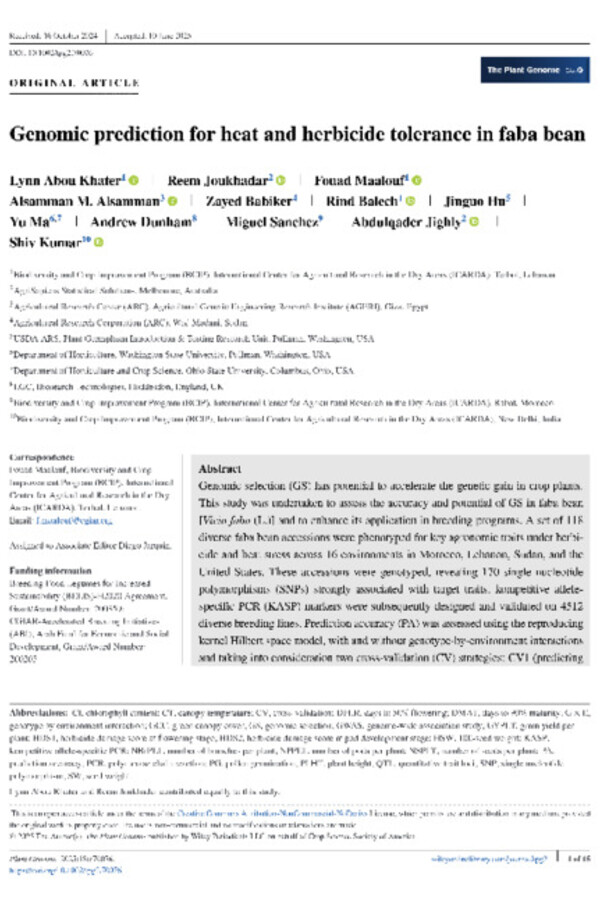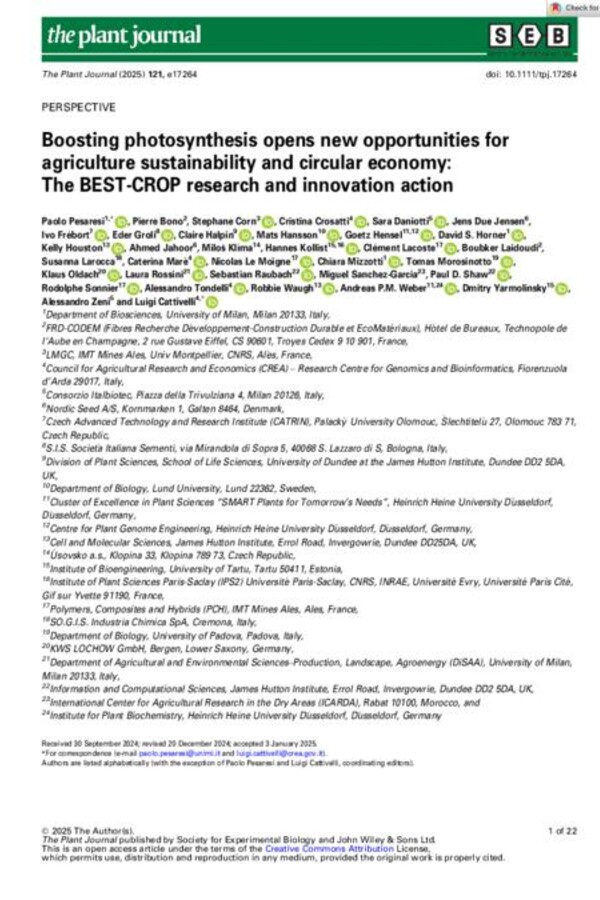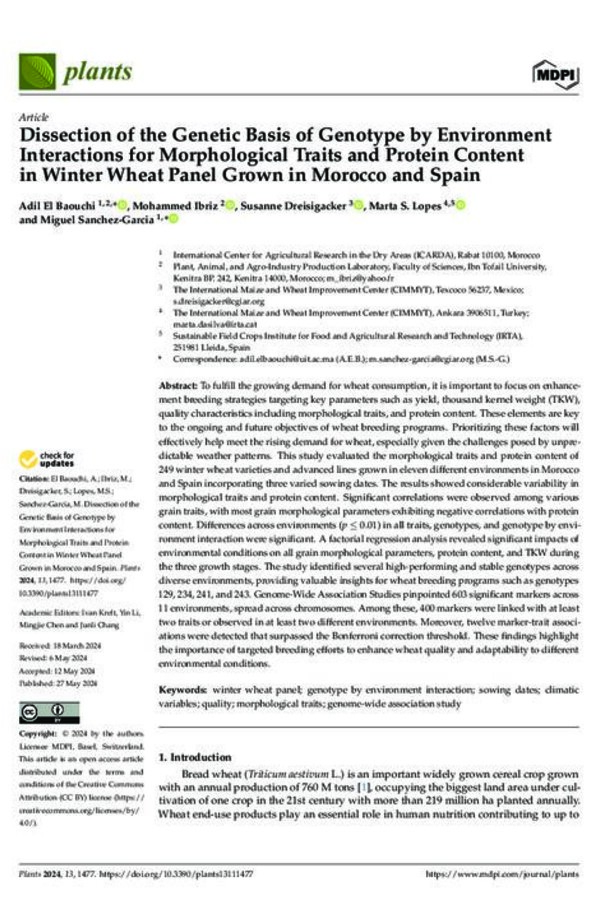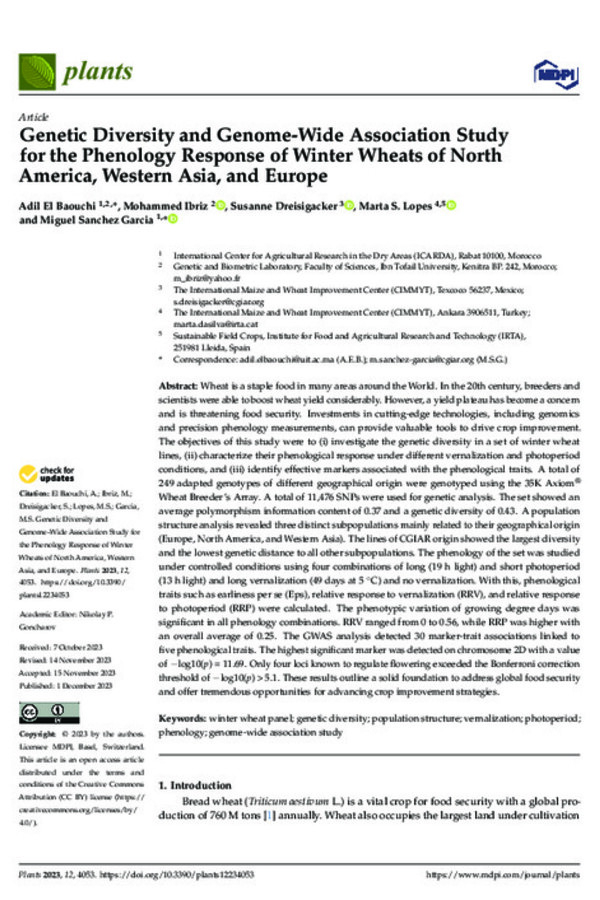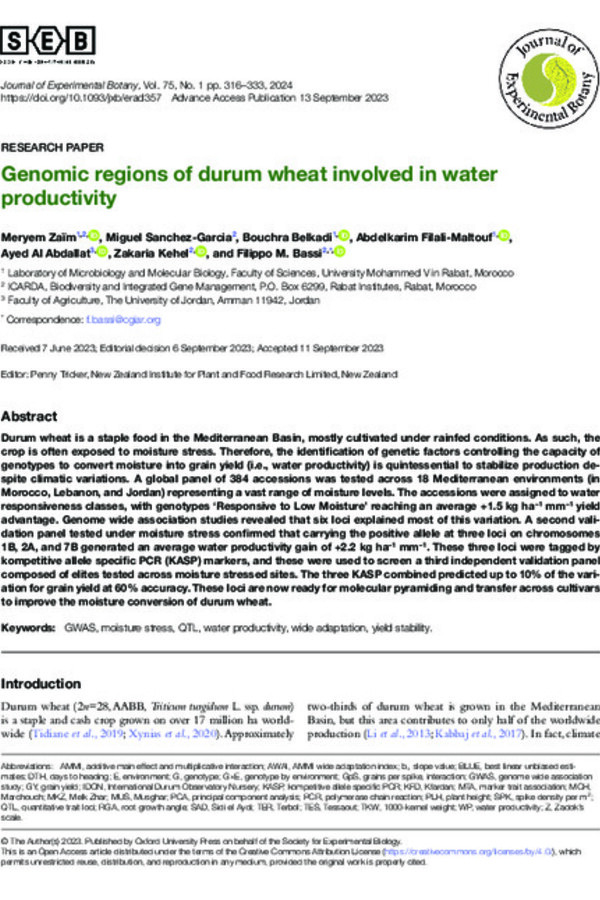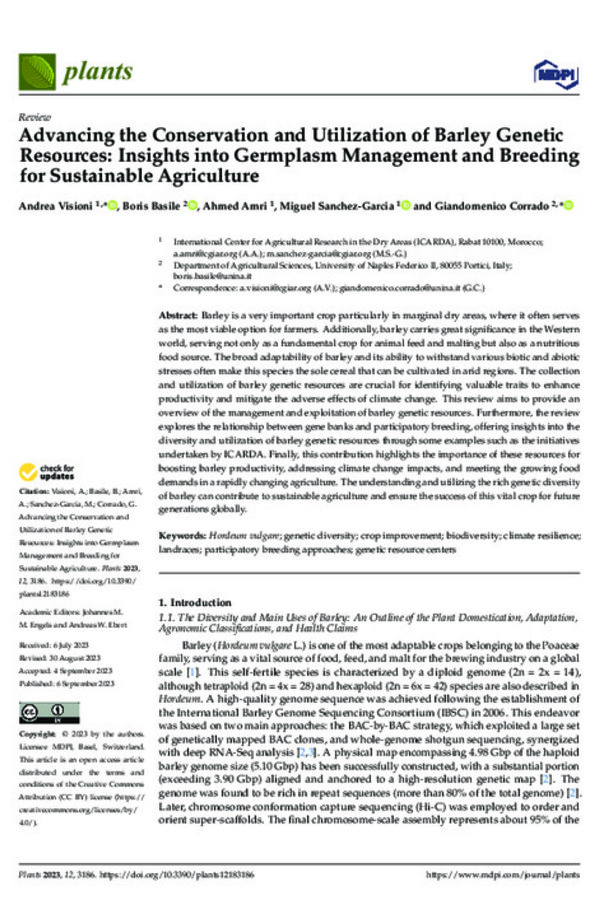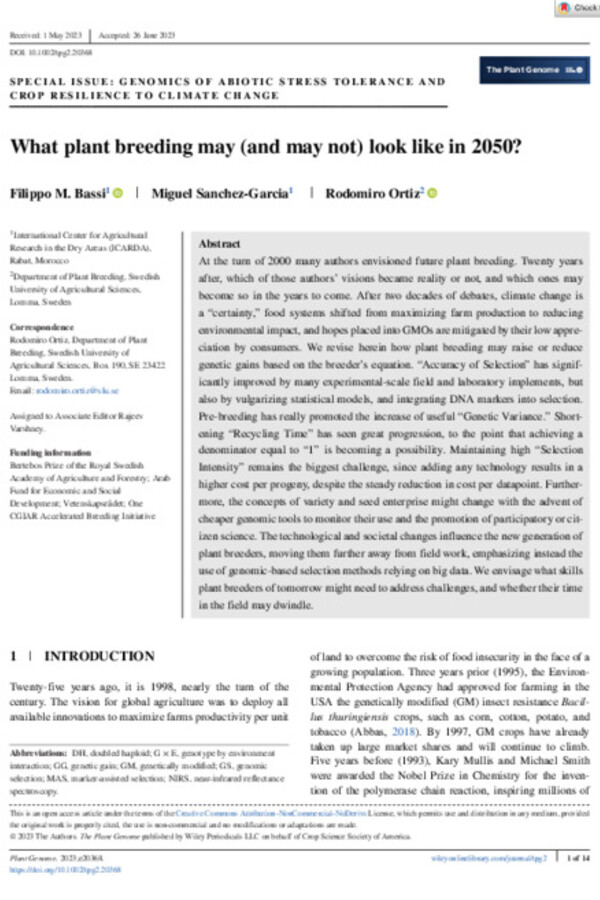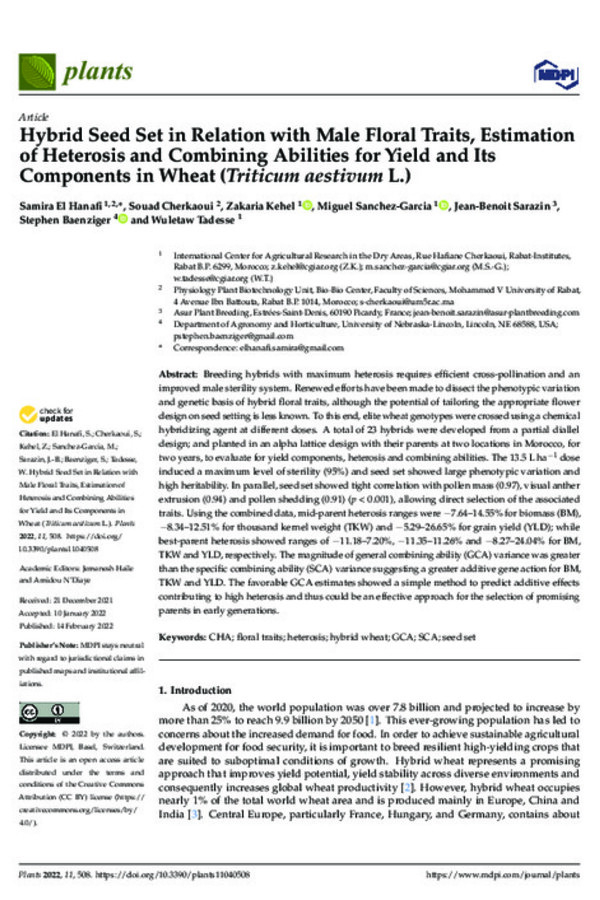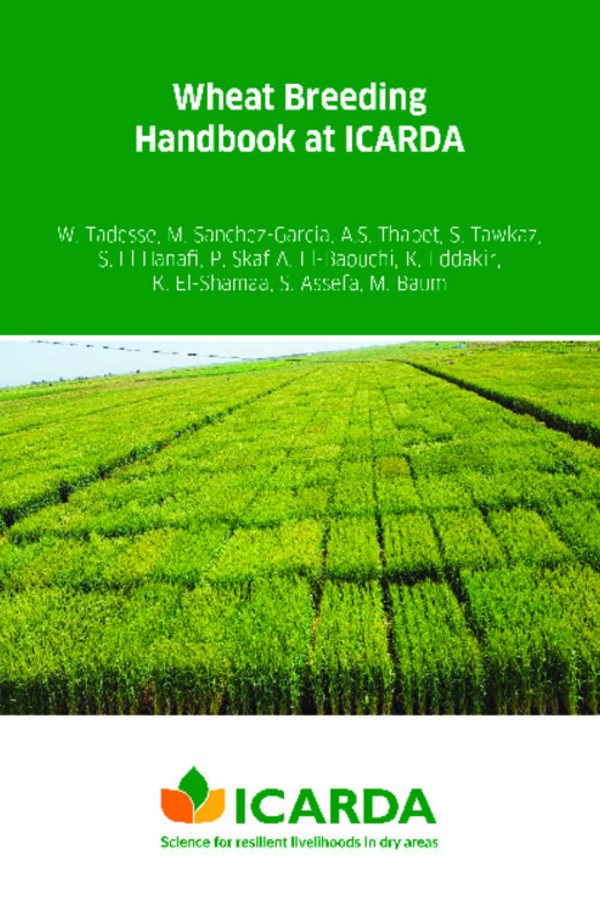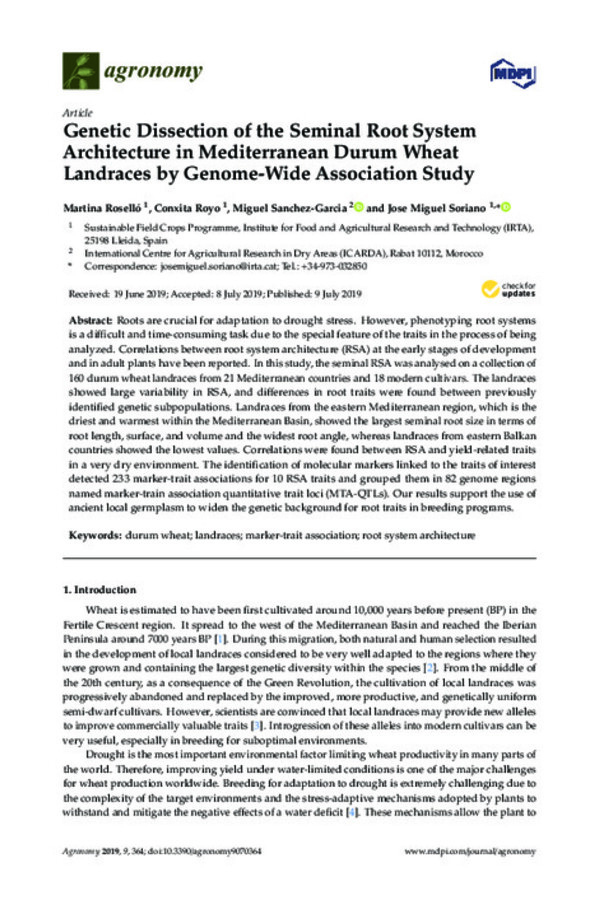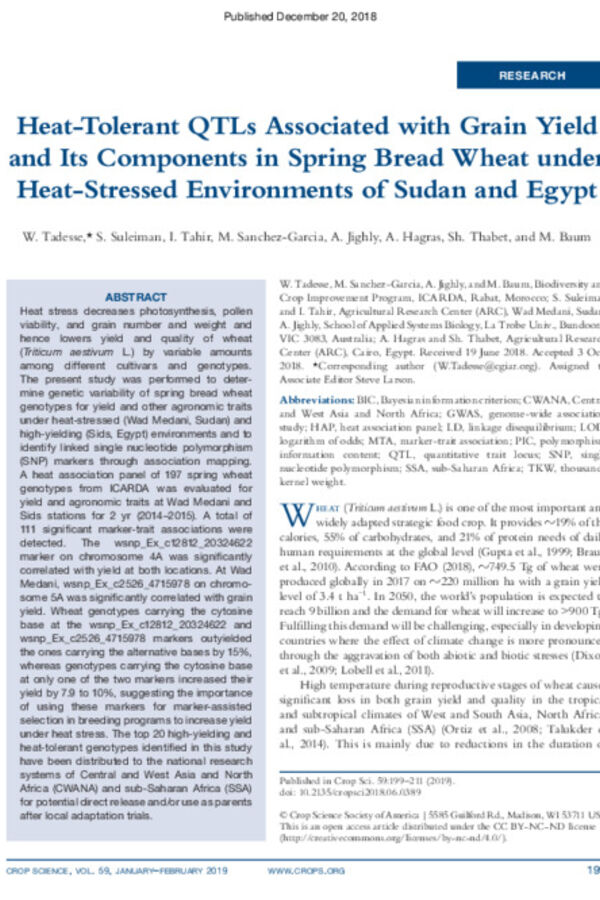
Miguel Sanchez Garcia's Publications
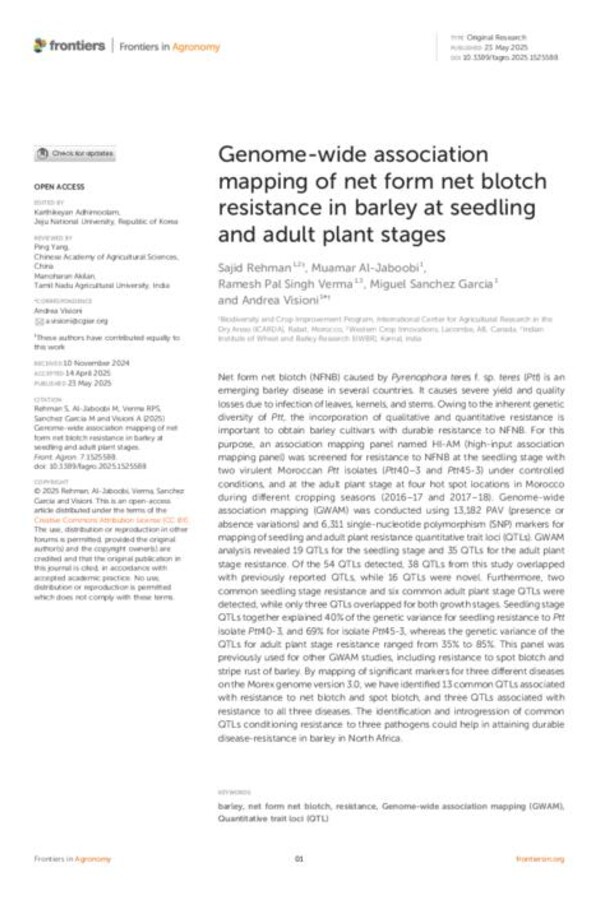
Genome-wide association mapping of net form net blotch resistance in barley at seedling and adult plant stages
May 23, 2025
Journal Article
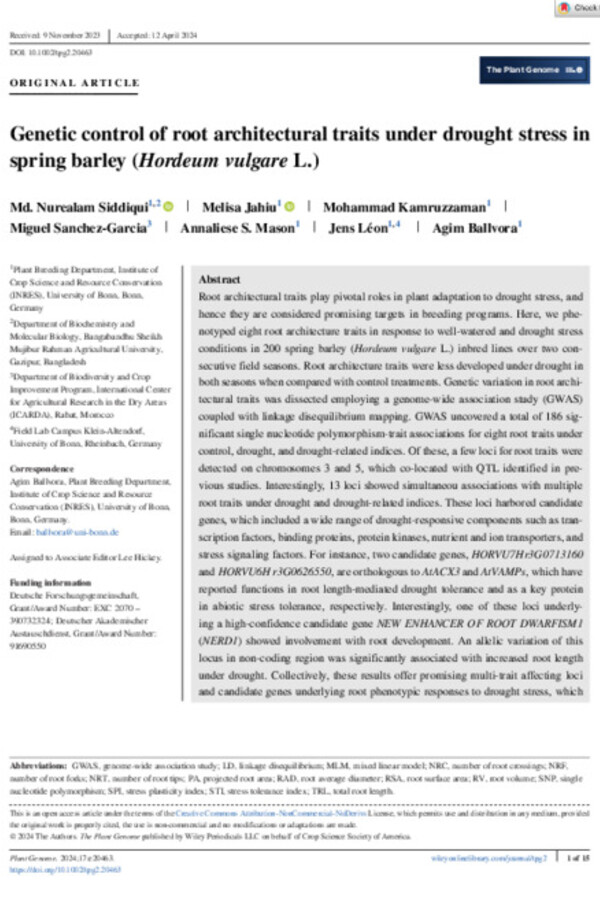
Genetic control of root architectural traits under drought stress in spring barley (Hordeum vulgare L.)
June 01, 2024
Journal Article
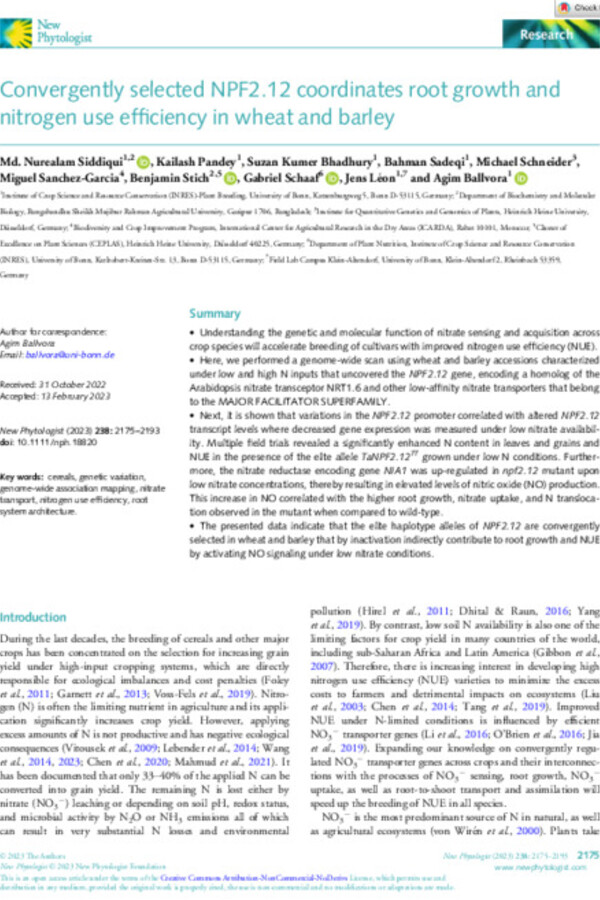
Convergently selected NPF2.12 coordinates root growth andnitrogen use efficiency in wheat and barley
June 01, 2023
Journal Article
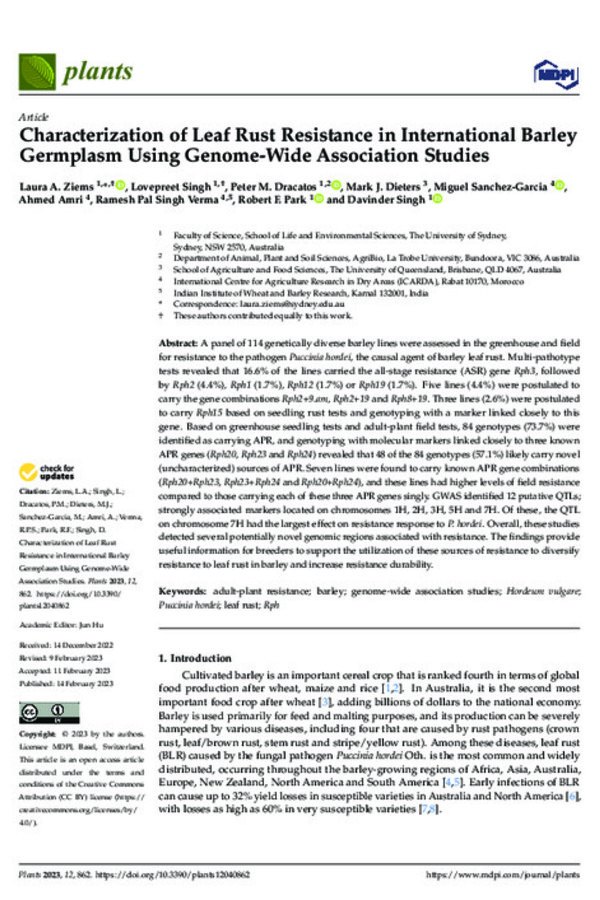
Characterization of Leaf Rust Resistance in International Barley Germplasm Using Genome-Wide Association Studies
February 14, 2023
Journal Article
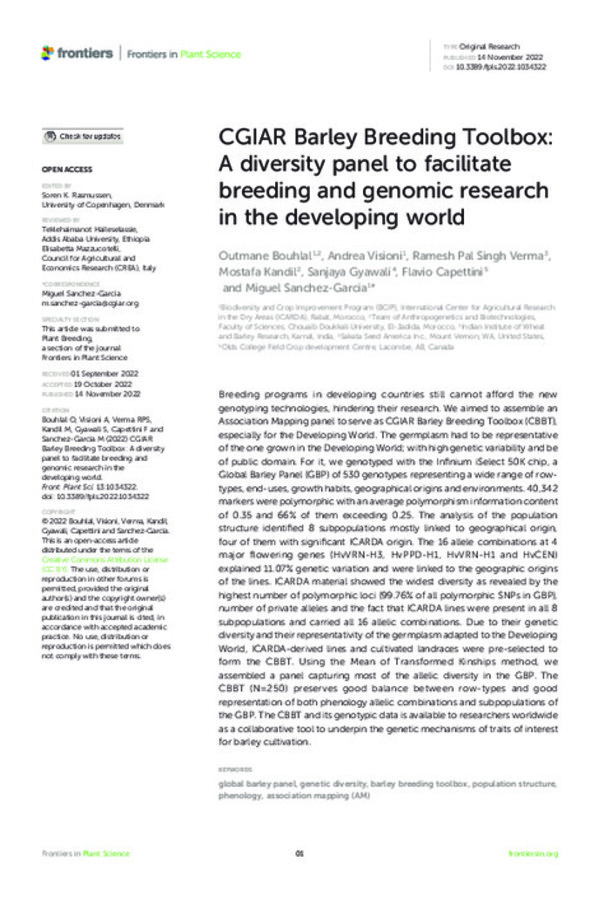
CGIAR Barley Breeding Toolbox: A diversity panel to facilitate breeding and genomic research in the developing world
November 14, 2022
Journal Article
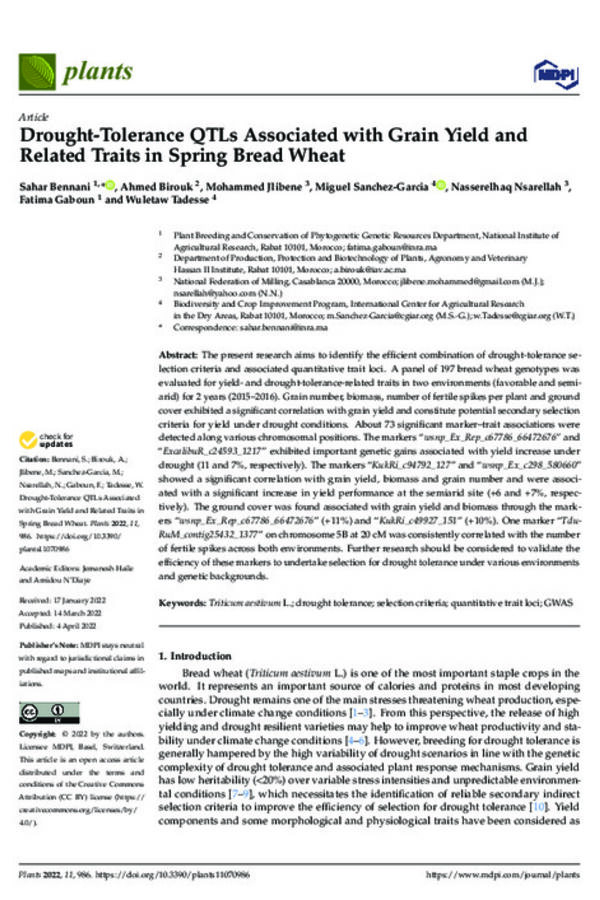
Drought-Tolerance QTLs Associated with Grain Yield and Related Traits in Spring Bread Wheat
April 04, 2022
Journal Article
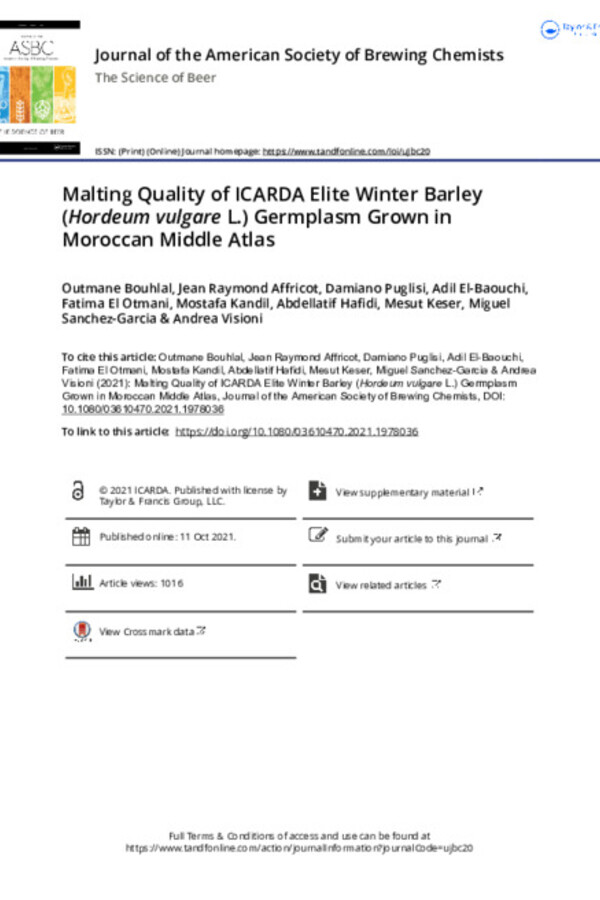
Malting Quality of ICARDA Elite Winter Barley (Hordeum vulgare L.) Germplasm Grown in Moroccan Middle Atlas
January 01, 2022
Journal Article
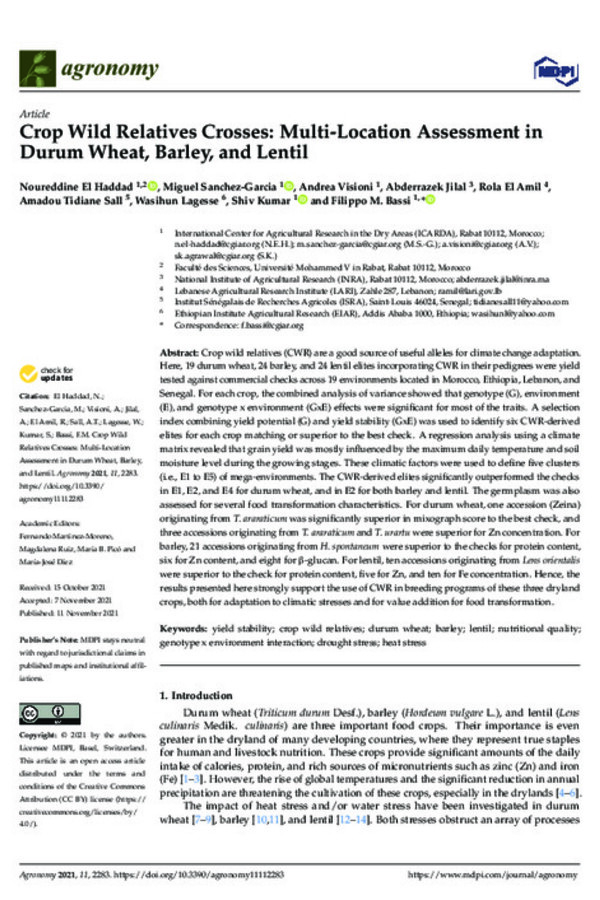
Crop Wild Relatives Crosses: Multi-Location Assessment in Durum Wheat, Barley, and Lentil
November 11, 2021
Journal Article

Genome-wide association study for adult plant resistance to yellow rust in spring bread wheat (Triticum aestivum L.)
April 21, 2021
Journal Article
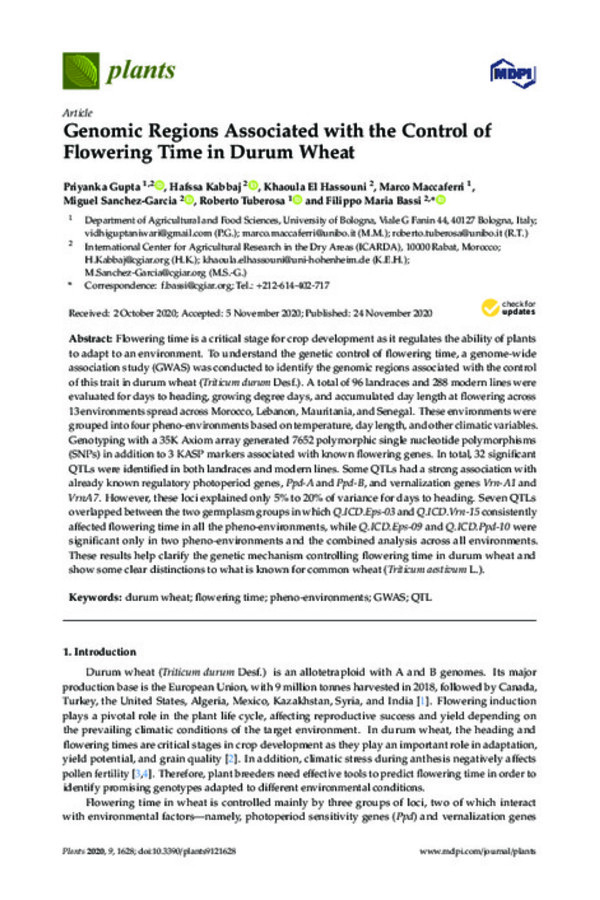
Genomic Regions Associated with the Control of Flowering Time in Durum Wheat
November 24, 2020
Journal Article

Phenotypic evaluation of elite spring bread wheat genotypes for hybrid potential traits
October 07, 2020
Journal Article
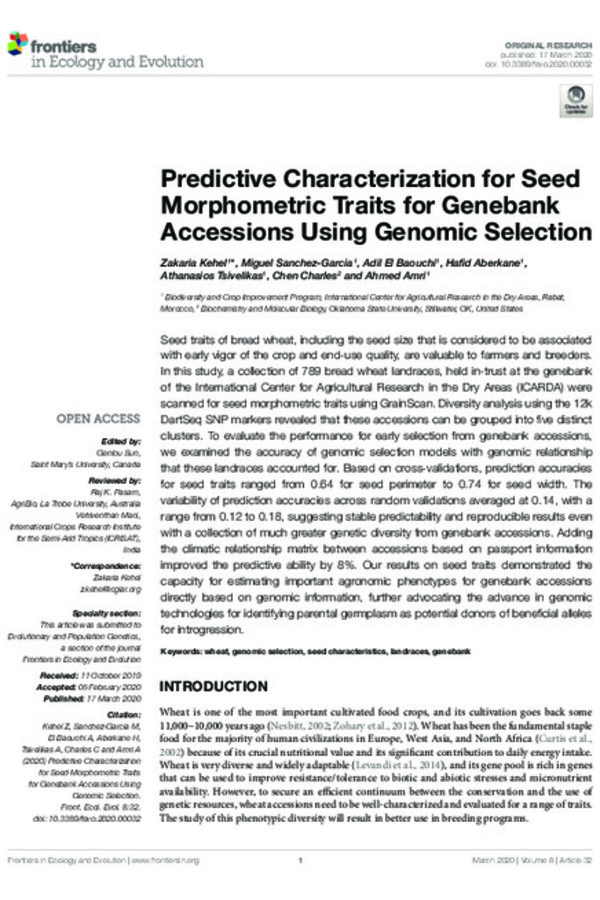
Predictive Characterization for Seed Morphometric Traits for Genebank Accessions Using Genomic Selection
March 17, 2020
Journal Article
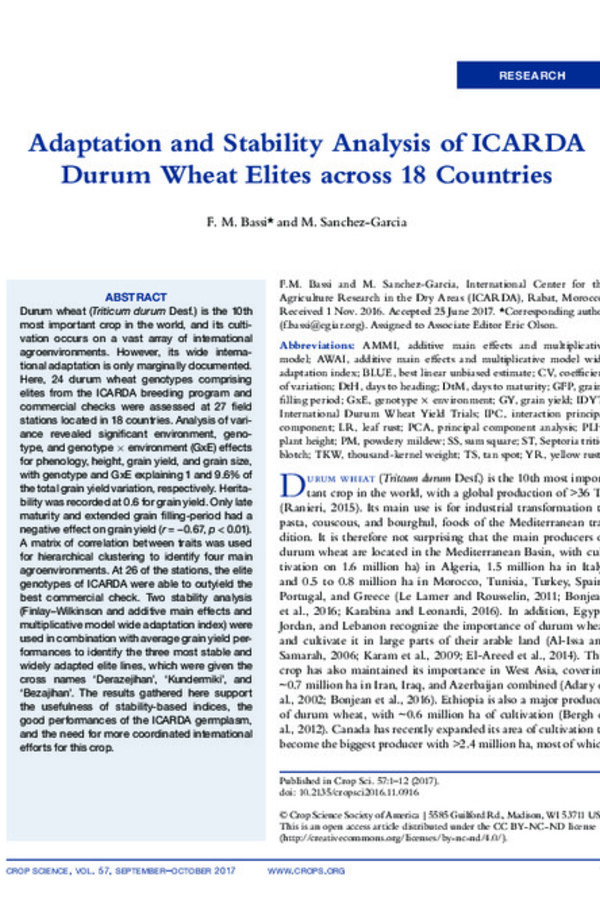
Adaptation and Stability Analysis of ICARDA Durum Wheat Elites across 18 Countries
August 03, 2017
Journal Article
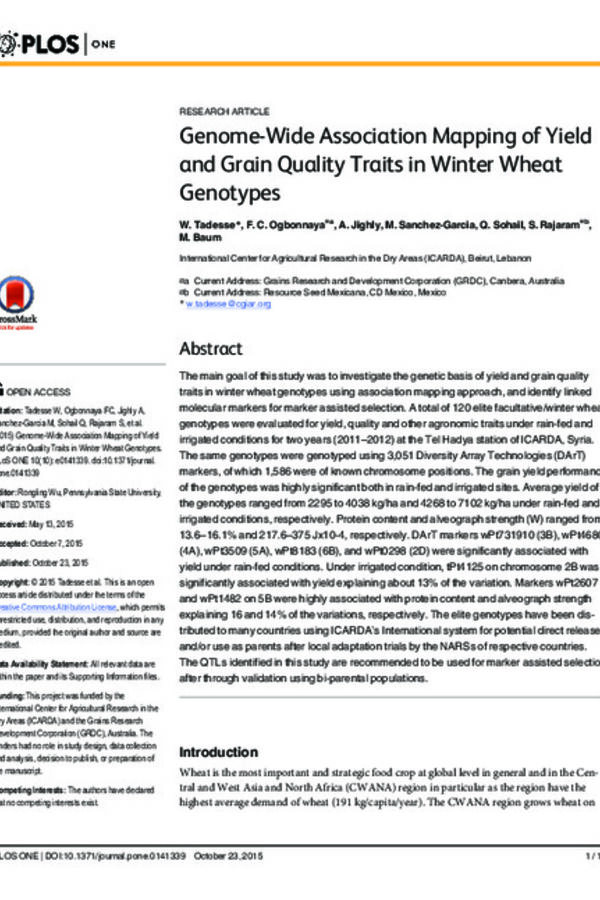
Genome-Wide Association Mapping of Yield and Grain Quality Traits in Winter Wheat Genotypes
October 23, 2015
Journal Article
/

